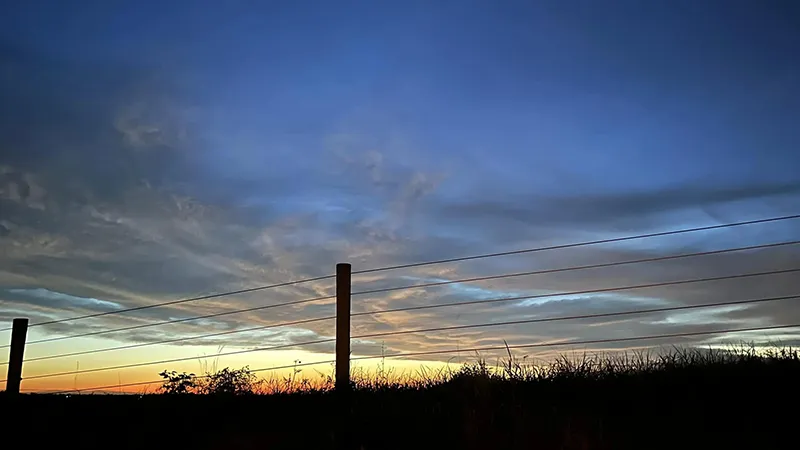Dayton IowaATTRACTIONS & THINGS TO DO
Listed below are the best attractions and things to do near Dayton, Iowa.
1. Skillet Creek Indian Mounds
ANCIENT NATIVE AMERICAN HERITAGE
Skillet Creek Indian Mounds is a serene park in Dayton that blends nature with ancient Native American heritage. Visitors can explore the historic mounds while enjoying the peaceful natural surroundings. The site offers night hikes that provide a unique way to experience this important cultural landmark.
2. Dayton Oaks Camp & Conference Center
PEACEFUL RETREAT DESTINATION
Dayton Oaks Camp & Conference Center offers visitors a tranquil retreat in the heart of Iowa. The center provides accommodation and meeting facilities surrounded by natural beauty. Guests can enjoy outdoor activities while taking advantage of the center's amenities.
3. Valkommen House
HISTORIC IOWA DWELLING
Valkommen House stands as a testament to Dayton's rich cultural heritage. The historic dwelling offers visitors a glimpse into Iowa's past through preserved architecture and artifacts. Tours of the house provide insights into the daily lives of early settlers in the region.
4. Des Moines River Water Trail
SCENIC WATERWAY ADVENTURE
The Des Moines River Water Trail passes through Dayton offering exceptional opportunities for kayaking, canoeing, and fishing. The waterway features scenic views and abundant wildlife along its banks. Paddlers can enjoy varying levels of difficulty as they navigate this beautiful stretch of Iowa's longest river.
5. Dolliver Memorial State Park
NATURAL SANDSTONE FORMATIONS
Dolliver Memorial State Park features impressive sandstone formations and archaeological sites near Dayton. The park offers hiking trails through wooded areas along the Des Moines River. Visitors can enjoy picnicking, camping, and exploring the unique geological features that make this park special.
6. Brushy Creek State Recreation Area
OUTDOOR RECREATION PARADISE
Brushy Creek State Recreation Area encompasses over 6,000 acres of diverse landscape featuring a 690-acre lake. The area offers extensive multi-use trails for hiking, horseback riding, mountain biking, and snowmobiling. Visitors can also enjoy fishing, hunting, camping, and wildlife viewing throughout the seasons.
7. Boone and Scenic Valley Railroad
HISTORIC RAILWAY JOURNEY
The Boone and Scenic Valley Railroad offers visitors a chance to experience travel as it was in the golden age of railroading. Vintage trains carry passengers through the Des Moines River Valley on a journey featuring spectacular scenery and historic narration. The adjacent James H. Andrew Railroad Museum showcases Iowa's rich railroad heritage through exhibits and artifacts.
8. Farm House Museum
IOWA'S AGRICULTURAL ROOTS
The Farm House Museum was the first building on what would become the Iowa State University campus. Built in 1860, it has been restored to reflect life in the late 19th and early 20th centuries. As a National Historic Landmark, it offers visitors a glimpse into Iowa's agricultural heritage through period furnishings and exhibits.
9. Amana Colonies
HISTORIC GERMAN SETTLEMENT
The Amana Colonies consist of seven historic villages founded by German immigrants as a religious communal society in 1855. These villages preserve traditional crafts, culture, and architecture while offering visitors shopping, dining, and lodging experiences. As one of Iowa's most famous travel attractions and a National Historic Landmark, the colonies provide a unique window into a distinctive religious and cultural heritage.
10. Blood Run Site
ANCIENT TRIBAL CENTER
Blood Run was an intertribal and ceremonial center for the Oneota and Prairie Dakota tribes from 900 to 1720 A.D. Located along the Big Sioux River and Blood Run Creek, this National Historic Landmark includes burial mounds and village sites. Visitors can access the archaeological area by foot to explore this significant cultural site.
11. Old Capitol
IOWA'S FIRST STATEHOUSE
The Old Capitol served as the last territorial capitol of Iowa and the first state capitol building from 1842 to 1857. Restored to its historical glory, it now functions as a museum with self-guided tours and changing exhibition galleries reflecting Iowa's history and heritage. This National Historic Landmark was also the University of Iowa's first building, connecting visitors to the state's educational origins.
12. The Reverend George B. Hitchcock House
UNDERGROUND RAILROAD STATION
The Reverend George B. Hitchcock House was built in 1856 by a Congregational minister and served as a station on the Underground Railroad. In 2001, the home was recognized as a National Park Service Underground Railroad Network to Freedom Site. This National Historic Landmark provides visitors with insights into the abolitionist movement and the secret network that helped enslaved people escape to freedom.
13. Fort Museum and Frontier Village
PIONEER LIFE RECREATION
The Fort Museum and Frontier Village recreates life on the Iowa frontier with authentic and replica buildings from the 19th century. Visitors can explore a schoolhouse, church, jail, and other structures while viewing historical artifacts and exhibits. The museum complex includes a recreation of the original 1862 military fort that protected settlers in the region.
14. Ledges State Park
DRAMATIC SANDSTONE CANYONS
Ledges State Park features dramatic sandstone cliffs rising up to 100 feet above the Des Moines River valley. The park offers hiking trails that wind through wooded areas and along canyon walls with stone staircases providing access to different levels. Visitors can enjoy picnicking, camping, fishing, and wildlife viewing in one of Iowa's oldest and most popular state parks.
15. Mamie Doud Eisenhower Birthplace
FIRST LADY'S CHILDHOOD HOME
The Mamie Doud Eisenhower Birthplace in Boone preserves the childhood home of the First Lady who was born there in 1896. Restored to its appearance during her early years, the modest Victorian cottage contains period furnishings and personal memorabilia. Visitors can learn about Mamie's life, her marriage to President Dwight D. Eisenhower, and her influence as First Lady during the 1950s.
